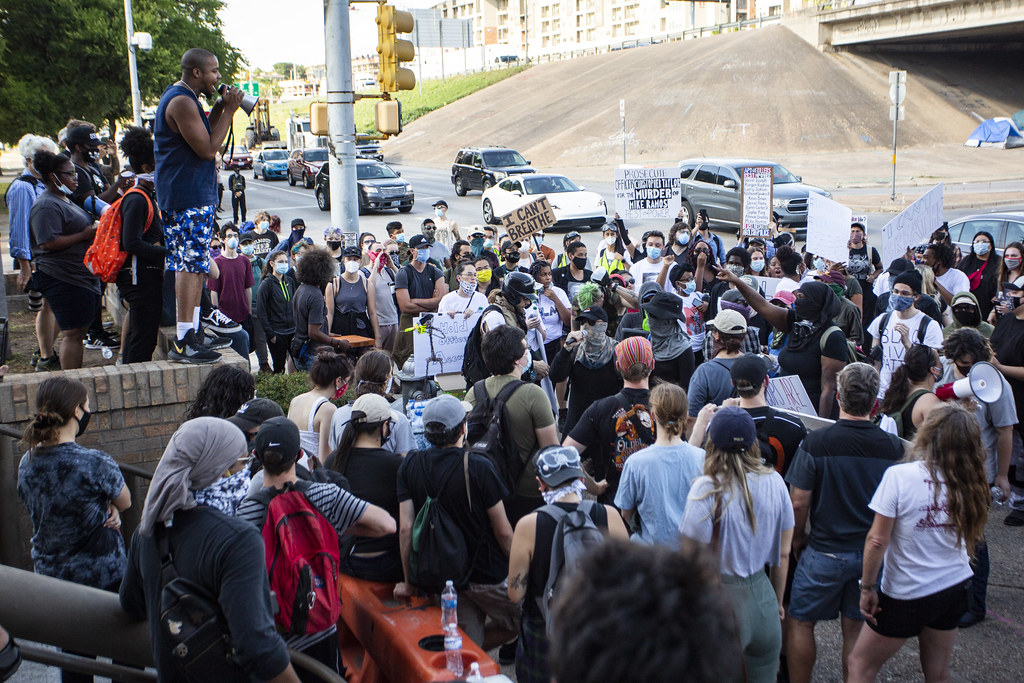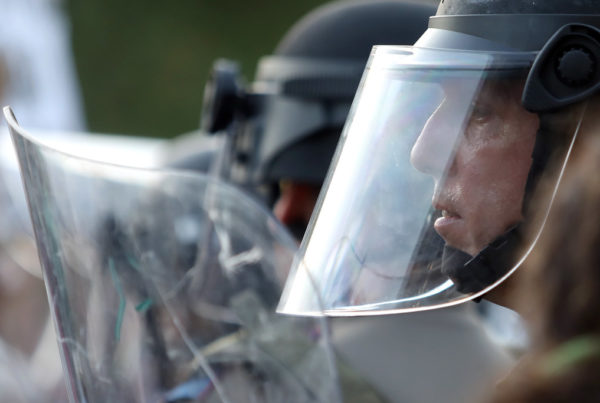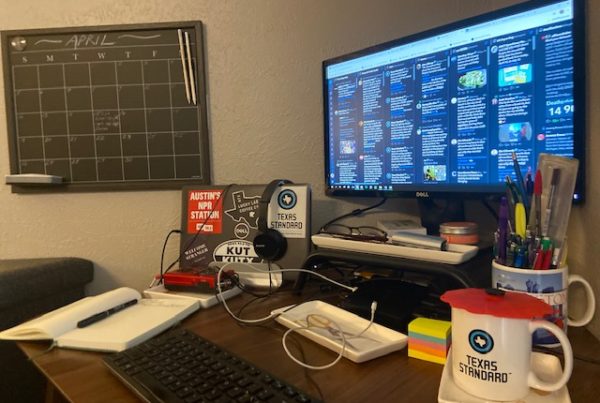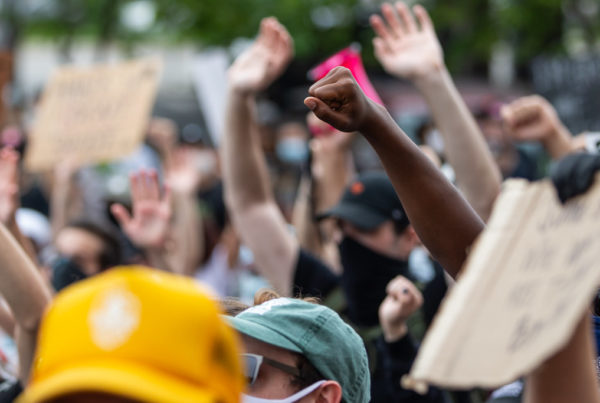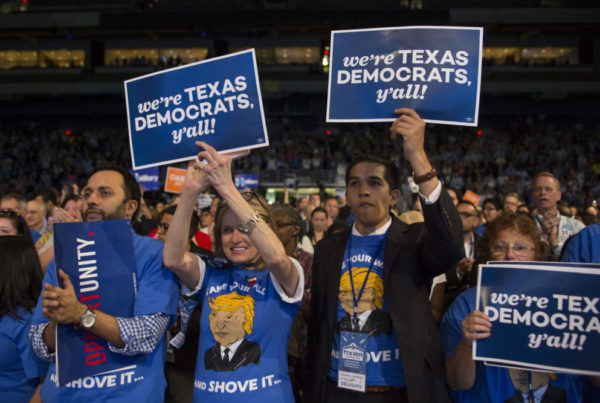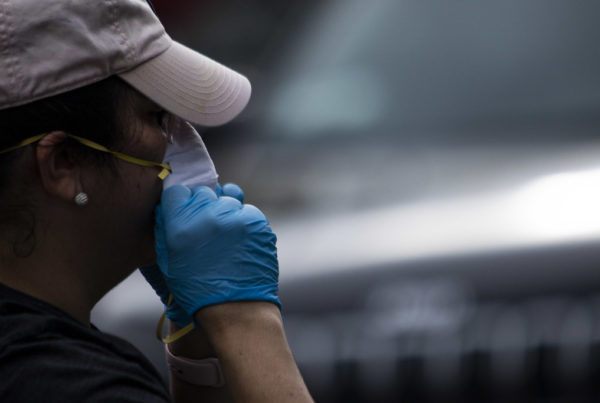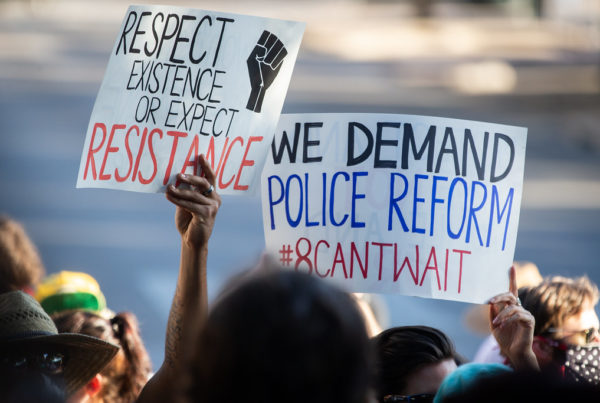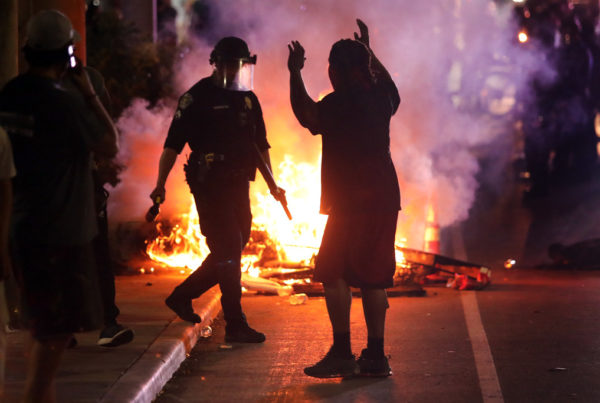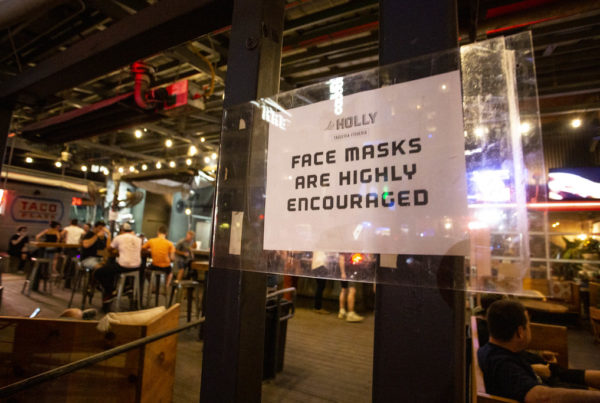The words journalists use to convey what’s happening in the news can have a big impact on the way events and people are perceived. Reporting about protests that have flared across the United States since the death of George Floyd while in the custody of Minneapolis police, offers a fresh example.
Danielle K. Kilgo is professor of journalism, diversity and equality at the Hubbard School of Journalism and Mass Communication at the University of Minnesota. She is also coauthor of a study called “Protests, Media Coverage, and a Hierarchy of Social Struggle.” Kilgo told Texas Standard host David Brown she had studied media portrayals of protests that occurred after the deaths of several black people – most of whom were killed by police. For the new study, she worked with a University of Houston researcher to compare coverage of protests by Texas newspapers.
In addition to newspapers from the state’s biggest cities, Kilgo looked at smaller papers, representing different geographic areas of Texas.
Words like “protest,” “demonstration” and “riot” are all often used to describe people taking to the streets to express anger over the deaths of black people. Kilgo said these words affect the way readers feel about a given action.
“So, for example, if I call someone a ‘rioter,” [readers] automatically think they’re violent and they’re not supposed to be there, and they’re criminal,” she said.
Even more charged is a word like “thug” that some people believe is a racist term.
“A lot of times, especially when it comes to black civil rights protests, these terms help portray protesters as violent, and can contribute the the polarization around the support for the movement,” Kilgo said.
During the current rounds of protests surrounding the death of Floyd, Kilgo said media have tended to be less didactic in how they described those involved.
“We do have this nuance that’s provided to the protester group,” Kilgo said. “We have traditional social media actors and social movement actors. And then we have the crowds of people that are upset and ready to jump into this movement. And then we also have agitators who have different identities.”
Other elements of the current cycle of protests that Kilgo sees as new include the pandemic, and discussion about how protesters could impact the spread of COVID-19. Additionally, there is more emphasis now on police behavior toward participants than in the past.
Just as media outlets face challenges for the words they use to refer to protesters, politicians often employ “dog whistles” – words or phrases intended to resonate with their supporters, and sometimes to create outrage among their opponents. Kilgo said journalists who stick to certain well-worn words often do so because they’ve used them in the past.
“Journalists and audiences need to be ready to critique and think about the true definitions and meanings behind the words that they’re seeing – words like ‘riots,'” Kilgo said.
Web story by Shelly Brisbin.
If you found the reporting above valuable, please consider making a donation to support it here. Your gift helps pay for everything you find on texasstandard.org and KUT.org. Thanks for donating today.


